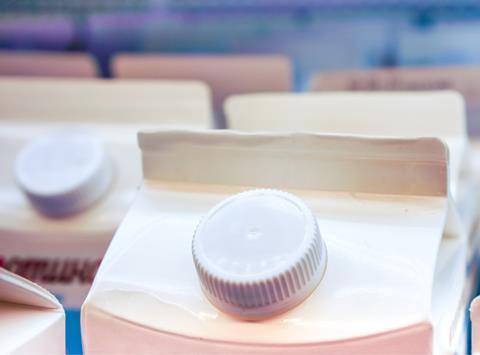
Is an obsession with “material bashing” hindering the packaging industry’s progress in terms of reducing greenhouse gas emissions? Robert Lilienfeld, founder and executive director of sustainable packaging think tank SPRING, gives his thoughts on this question in our latest opinion piece.
It’s clear that the solution to climate change is the reduction of greenhouse gas emissions. Robe asks if our obsession with “material bashing” is hindering progress in this field
Is an obsession with materials obscuring the real answer
Note to senior management: The answer to our greatest environmental challenge, climate change, does not lie with a generic belief in the reduction of plastic, aluminum, or any other material – real or imagined. It lies with the reduction of greenhouse gas generation.
Morrisons’ switches from easy to recycle PET milk jugs to aseptic-style cartons. Liquor companies move from glass, PET and aluminum packaging to so-called paper bottles. A Dutch company tries to woo me with a lidless paper to-go cup.
Made from renewable resources! Made from recycled materials! 100% recyclable! Compostable.
What none of these companies will tell you is that all contain LDPE barriers or bladders that aren’t considered part of the sustainability equation. Or if they are considered part of it, they actually reduce the recyclability of the container in question.
This is especially true for the milk cartons, which are the usual TetraPak configuration of paperboard, aluminum film, and polyethylene tie and barrier layers. The recycling rate for these types of cartons appears to be around 20%, versus generally much higher rates for PET jugs.
Paper wine bottles? Plastic bladder inside. (It’s actually just a bag-in-box package shaped like a bottle.) Apparently, you can recycle the pouch by cleaning it, drying it, requesting a mailer, and sending it back (to whom?).
Compostable rum bottles? Remove the pouch and simply compost it!
Paper to-go cups? You have to look hard to see that the liquids are actually in an LDPE bag that sits inside the paper cup.
Paper sangria cans? Simply aseptic-style packaging that won’t be recycled at anywhere near the rates for aluminum cans or PET bottles.
Some of these applications may actually make sense. But the plethora of truly bad ideas, like moving away from PET milk containers and creating compostable spirits bottles, indicates that beverage companies consider sustainability to be just another marketing tool, not a core business driver. Thus, public relations and promotion trump sustainable packaging design and engineering. Material bashing has become the marketing message of the day.
Note to senior management: The answer to our greatest environmental challenge, climate change, does not lie with a generic belief in the reduction of plastic, aluminum, or any other material – real or imagined. It lies with the reduction of greenhouse gas generation.
Thus, life cycle thinking is critical to the sustainable packaging decision-making process. General managers, marketers, and salespeople must also recognize that different materials, or combinations of materials, are required to do the job. Further, different applications, societies and cultures, economic conditions, and in-place local solid waste management infrastructures, all have significant roles to play in these decisions.
Progress can only be made when CEOs are forced to consider the true environmental implications of their decisions. This cannot happen until boards of directors, officers, employees, and shareholders feel these implications in their wallets. New modes of accounting and accountability are required to do so.
How do we make these happen?
















No comments yet